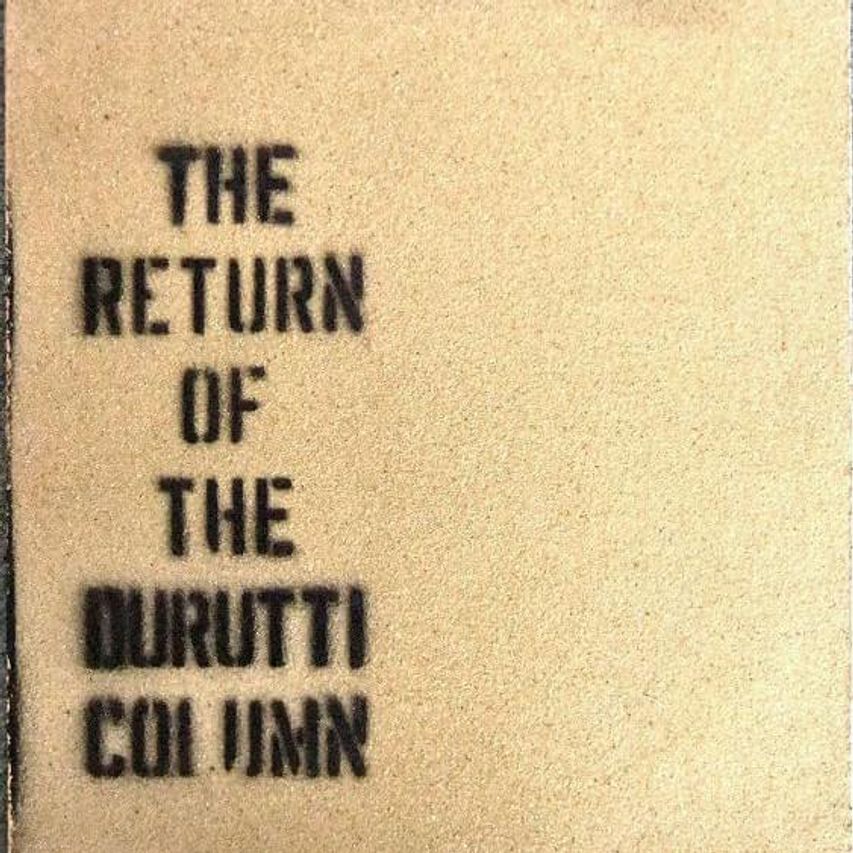
The Durutti Column – The Return of the Durutti Column [1979]
A sandpaper sleeve. Real sandpaper. It's one of my collector's items, and I almost threw it away.

The Durutti Column band meant nothing to me at the time. And the record only damaged the other sleeves in a collection I'd acquired.
Until I discovered that the original LP is rare and now sells for €250 or more. It also turns out there's a whole philosophy behind the concept of a sandpaper LP.
The idea originated in the 1950s with the Situationist International movement: a group of conceited artists who wanted to overthrow global capitalism. Guy Debord, one of the founders of the Situationists, had the ingenious idea in 1958 to cover one of his books with sandpaper. The idea was to shred all the books it touched. After all, if you want to create something new, you must first destroy your old environment (so these Marxists believed).
It took 22 years for this idea to be applied to a record cover. Fittingly enough, that record was the debut album by the English band The Durutti Column, who took their name from a Situationist comic strip. ‘Our guitarist Dave Rowbotham came up with the concept,’ says Vini Reilly in an interview about this LP. Rowbotham had read a book about the Situationist International and convinced the others that a sandpaper cover was a good idea. Tony Wilson, the boss of record label Factory Records, was certainly enthusiastic: ‘It's a beautiful idea to think that a record destroys every record next to it. It fits perfectly with the post-punk era of the eighties.’
Unfortunately, the cover cost a fortune. After purchasing 4,000 33cm pieces of sandpaper and the subsequent production costs, there was barely any money left for the actual recording of the album.
You'd expect a record with raw and dark music, as that was the specialty of Factory Labels, which rose to fame with Joy Division and its successor, New Order. The opposite is true. The music contradicts the cover art. Reilly had a falling out with the other members of the band and was left on his own. The record is essentially a solo album by Reilly, with a meditative collection of classically tinged guitar pieces, backed by minimalist electronic drum rhythms.
So why the literally abrasive cover art? one might wonder.
Record boss Wilson writes: ‘It shows that the entire music industry didn't give a damn about us. We didn't have a band. We just had a bleary-eyed guitarist, who only had three days in the studio. It was the post-punk era, so it was pretty radical to release this record with highly personal guitar pieces. But in the end, we made a damn good album. The cover art was already designed; we weren't going to change it’. Years later, the music is only available on CD. Wilson: "The cover doesn't work on a CD. I hate those plastic CD cases."
So, I'm one of the lucky record collectors who owns a copy of this LP, of which only 4,000 were released. I did put a protective plastic sleeve on it. The fact that my other covers are getting damaged is taking matters a step too far.
Occasionally, I give a presentation on record covers and use this record as an example of the relationship between art movements and album covers. Apparently, not everyone understands that. Recently, someone in the audience asked what thickness of sandpaper it was. Unfortunately, I couldn't give him an answer. It's coarse, though.
Gerrit-Jan Vrielink
Translator: Alex Driessen
